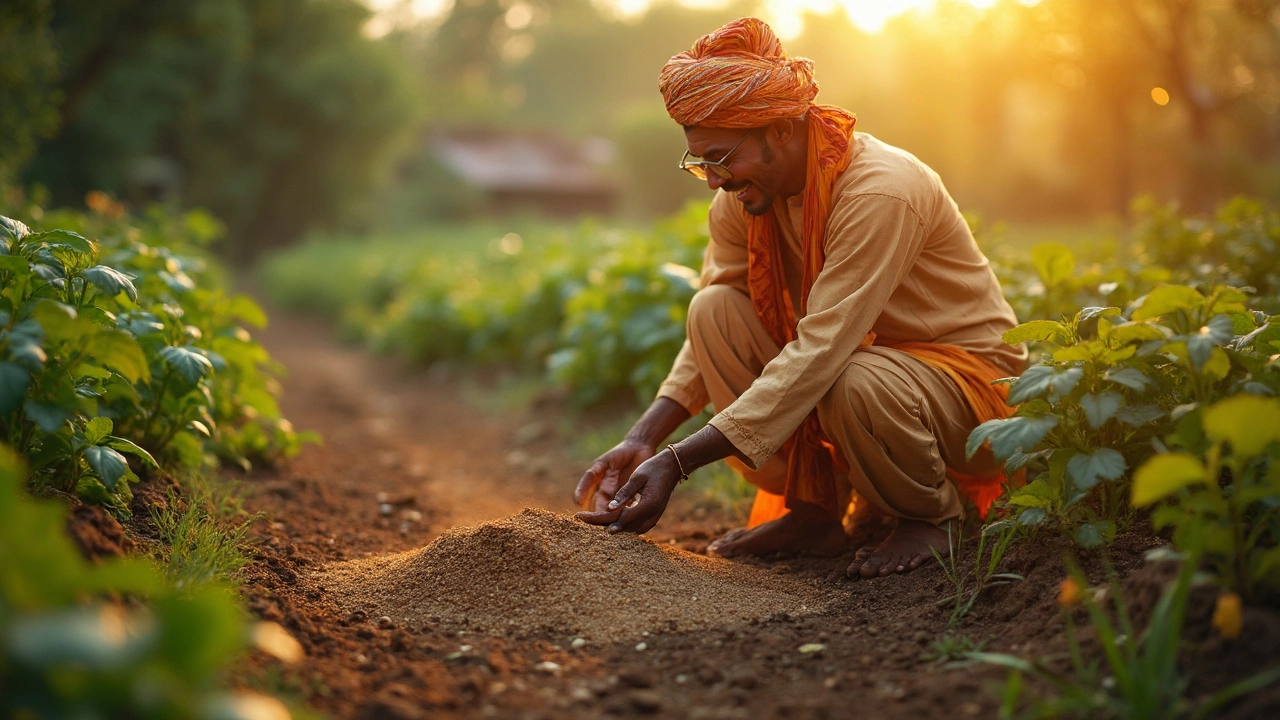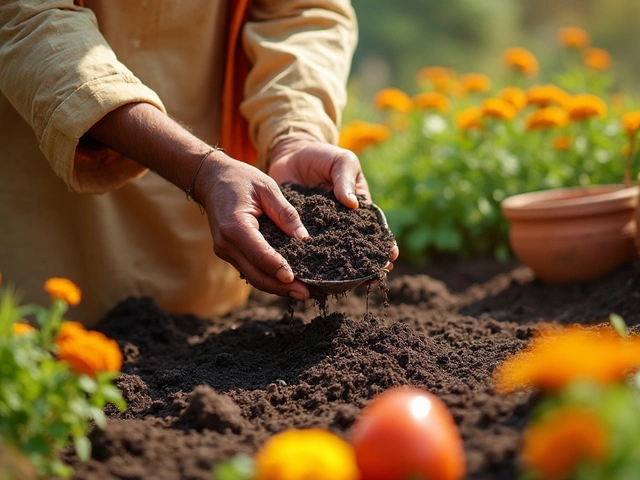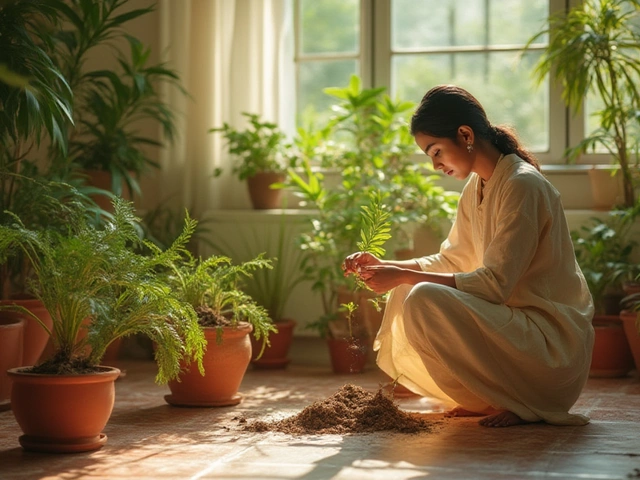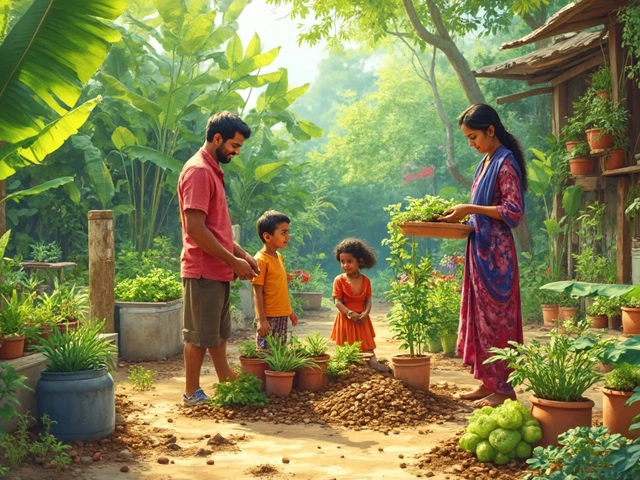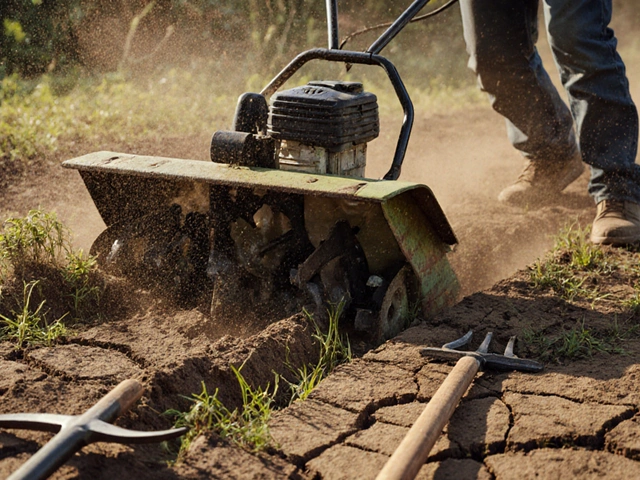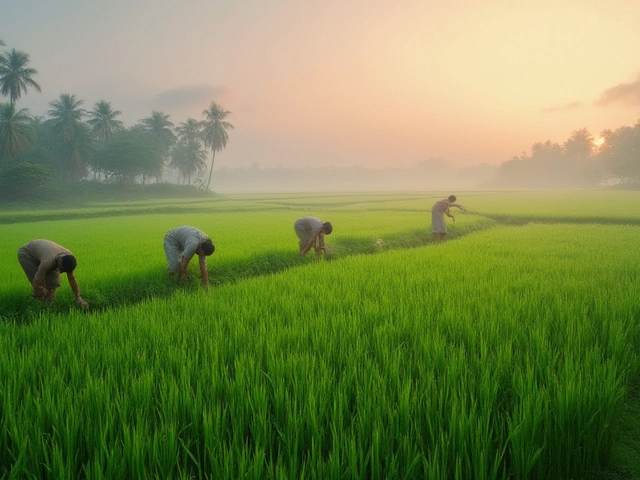You know how some folks start dumping sand into their garden beds thinking it'll solve all their problems? Yeah, it's a common move, but it doesn't always work as planned. It's like when Rohan, my kid, thinks adding more ketchup makes every meal better—sometimes it just doesn't fit.
Understanding soil texture is crucial. The soil in your garden is, well, the foundation of everything you're trying to grow. It's what determines if your plants stand tall or just flop over. Adding sand can change this texture, but the key is knowing if that's what your plants really need. Before you head off tossing sand around, let's break down why you might—or might not—want it in your garden soil.
- Understanding Soil Texture
- The Role of Sand in Soil
- Types of Sand to Use
- When Not to Add Sand
- Practical Tips for Mixing Sand and Soil
Understanding Soil Texture
Alright, so let's dig into soil texture. It’s like the secret recipe to a thriving garden. Soil texture is basically the mix of sand, silt, and clay in your soil. If your garden feels like a baking project gone a bit crazy, this might be why.
Each component—sand, silt, and clay—plays its part. Sand, the most familiar, has large particles that help with drainage but doesn’t hold onto nutrients well. That’s great if you’re looking to improve drainage, but not so awesome if your plants need more food to munch on.
Imagine sand like a bunch of basketballs. Water flows through easily, but it doesn't stick around long. Now, clay is more like tiny marbles that pack tightly. It holds water and nutrients well but can drown your plants if there’s too much of it. And then we have silt, which is somewhere in the middle—kind of like, let's say, tennis balls, providing a nice balance.
Knowing your soil texture is vital for deciding if you really need more sand. A simple DIY test can help. Grab some dry soil and add a bit of water until it feels damp. Then, roll it between your fingers:
- If it feels gritty, sand’s in charge.
- If it feels smooth, there’s more silt.
- If it’s sticky and molds easily, congrats, you’ve got plenty of clay.
These little tests can guide you on whether adding sand makes sense. Plus, you get to avoid the whole kitchen mess scenario with Rohan's ketchup strategy!
The Role of Sand in Soil
It's easy to see why sand might seem like a miracle fix for certain soil problems. When your garden soil feels like concrete after a rain, the idea of throwing in some sand to improve drainage seems like a no-brainer. But hold up! There's more to it than just mixing two ingredients and crossing your fingers.
Sand improves soil drainage and helps prevent that soggy mess that can rot plant roots. This is especially useful if you're working with heavy clay soil that compacts easily. Good drainage is vital for plants that don’t like wet feet, like tomatoes or lavender. When you mix sand into the soil, it creates more air space, allowing water to pass through more easily.
But not all garden soil benefits from sand. For sandy soils that already drain quickly, adding more sand can make matters worse by drying them out too fast. You see, sands vary in size—think fine beach sand versus coarse builder’s sand, and they affect soil differently. Coarse sand is best for opening up clay-heavy soil.
When considering a soil improvement strategy, it’s important to test your soil to understand its current texture. You can grab a handful of moist soil and try the 'squeeze test.' If it stays clumped, it's clay-heavy and might benefit from sand. If it crumbles, it likely doesn't need any more sand.
Understanding the role of sand can save you from making costly mistakes. Yes, sand has its place in creating the perfect soil mix, but make sure you're using the right type and amount. Not every garden needs it, just like how not every meal needs extra ketchup.
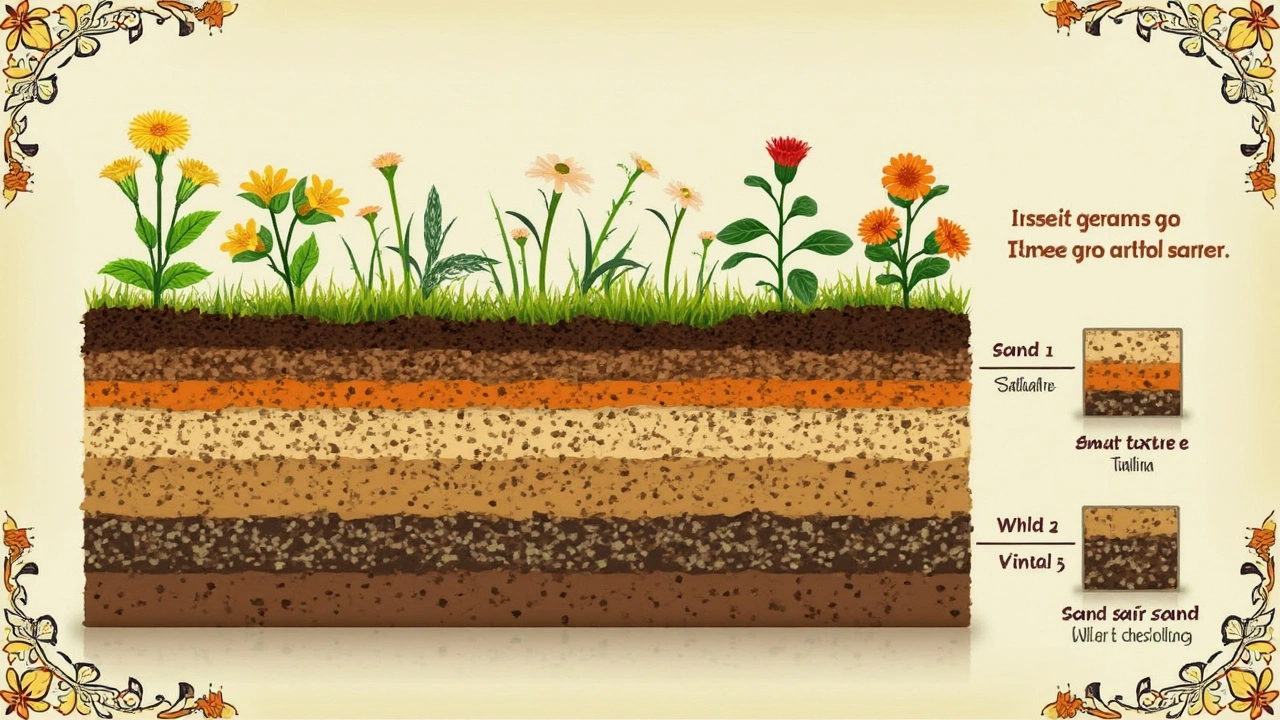
Types of Sand to Use
Not all sands are created equal in the world of gardening. It's kind of like picking the right pair of shoes for Rohan's soccer game; you wouldn't send him out in flip-flops, right? The same logic applies here. Knowing which sand works best with your garden soil is key.
First off, there's builder's sand, sometimes called coarse sand or concrete sand. It's the gritty stuff you might find at a hardware store. This type of sand has sharp particles, which means it won't compact and can improve drainage. If your garden feels a bit like a tiny swamp every time it rains, this could be your go-to.
Then you have horticultural sand. This one's a bit more specialized, often targeted for plant use. It's less sharp and a bit more expensive, but a solid choice if you're dealing with delicate plants.
Avoid play sand. I know it's tempting because it's cheap and easy to get—especially if you’ve got leftover sand from a sandbox—but it's too fine and often too uniform. Play sand compacts easily, which is the opposite of what you want in a soil improvement strategy.
Here's a quick comparison to help you choose:
| Type of Sand | Good for... | Bad for... |
|---|---|---|
| Builder's Sand | Improving drainage, preventing soil compaction | Fine-textured gardens |
| Horticultural Sand | Ideal for plant health, delicate plants | Budget gardening |
| Play Sand | Play areas, sandboxes | Soil improvement, plant health |
So before you start sprinkling sand in your garden, think about what you're growing and what your soil needs. Picking the right sand is like choosing the right tool for the job—it makes everything a lot easier and your plants a whole lot happier.
When Not to Add Sand
So, before you dump that bag of sand into your garden soil, let's chat about when it's not your best friend. While sand can do wonders in some situations, there are definitely times you should hold back.
First off, if your soil is mostly clay, adding sand might actually make things worse. Picture this: clay and sand can form a concrete-like mix, which is the last thing your plants need. Instead, it's better to look into organic matter like compost or peat moss to break up that heavy soil.
Next up, if your garden is already sandy, adding more sand might rob the soil of the nutrients plants need to thrive. You see, sandy soil tends to drain water—and nutrients—too quickly. In this case, reaching for organic matter is again your go-to move to boost the soil's nutrient content.
Also, when dealing with poor drainage issues, don't automatically go for sand. Assess what's causing the problem. Sometimes it's about how the water flows, not the soil texture itself. Adding sand might not fix anything and could be a waste of effort.
- If you notice water pooling after rain, it could be a slope issue, not a soil one.
- Raised beds might help manage drainage better than altering soil texture.
Lastly, do a soil test before deciding on garden soil fixes. It's like knowing your symptoms before medicine. A test will guide you on whether sand, organic matter, or something else entirely is the real answer. Remember, when in doubt, more sand isn't always the fix; understanding your soil type is key.
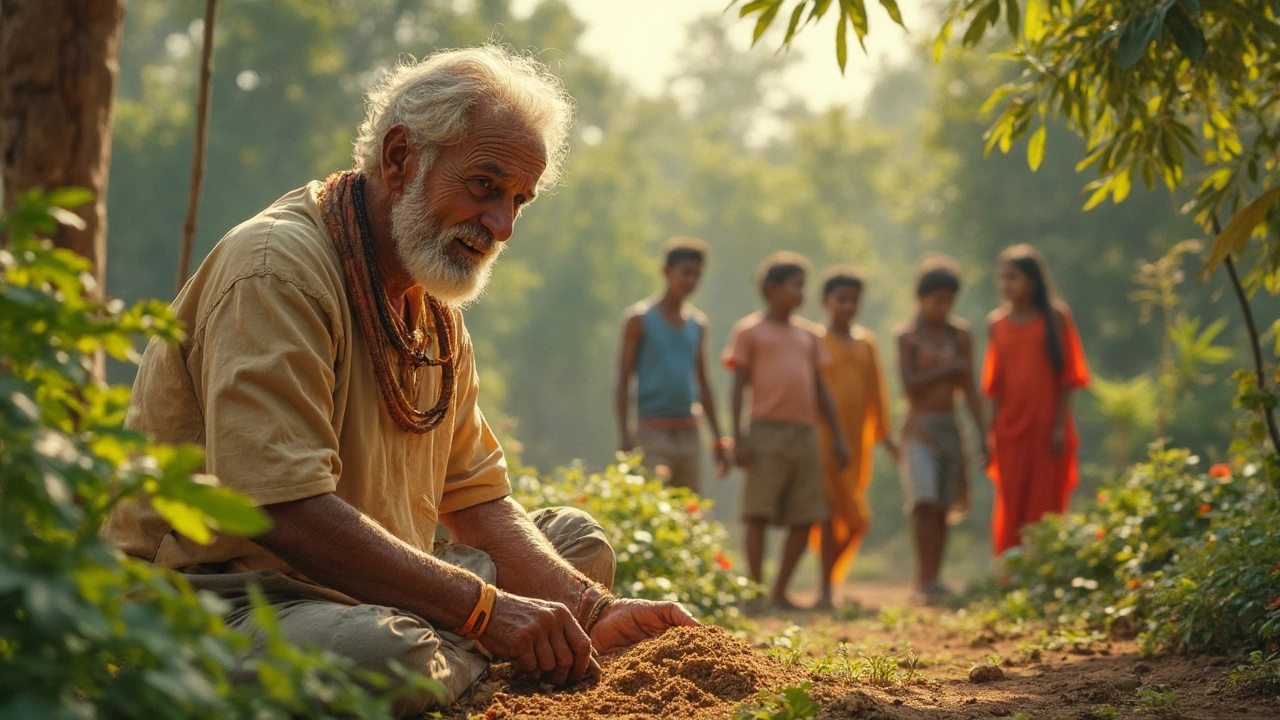
Practical Tips for Mixing Sand and Soil
So, you’ve decided to give your garden soil that sandy boost. Here's how to do it right without turning your garden into a sandbox.
First, figure out why you're adding sand. If it's to improve drainage, this could be helpful, but if your soil is already sandy, you might want to think twice. Sometimes mixing sand can create a concrete-like mix, especially with clay soils, so proceed with caution.
Here's a step-by-step guide for mixing sand with your garden soil:
- Test Your Soil First: Get a soil test kit to know exactly what you're working with. Understanding your soil's pH and composition will guide how much sand to add.
- Choose the Right Sand: Not all sand is created equal. Go for coarse, sharp sand (like builder's sand) rather than fine sand. Fine sand can compact and cause more drainage problems.
- Mix in Proportions: A good starting mix is 50% existing soil and 50% sand for heavy clay soils. For loamy soil that just needs a bit more drainage, 20-30% sand might be enough.
- Test It Out: Before you go full throttle on the entire garden, try a small area first. This way, you can see how your plants respond without risking your entire setup.
- Maintain Balance: After mixing, ensure consistent moisture levels. A mix that's too dry or too wet can harm your plants, so keep an eye on the water levels.
Remember, the main goal of adding sand is to enhance soil characteristics. Overdoing it can lead to unwanted outcomes. So, try it out and adjust based on how your garden responds. Keep tinkering until your plants look happier. Happy gardening!
